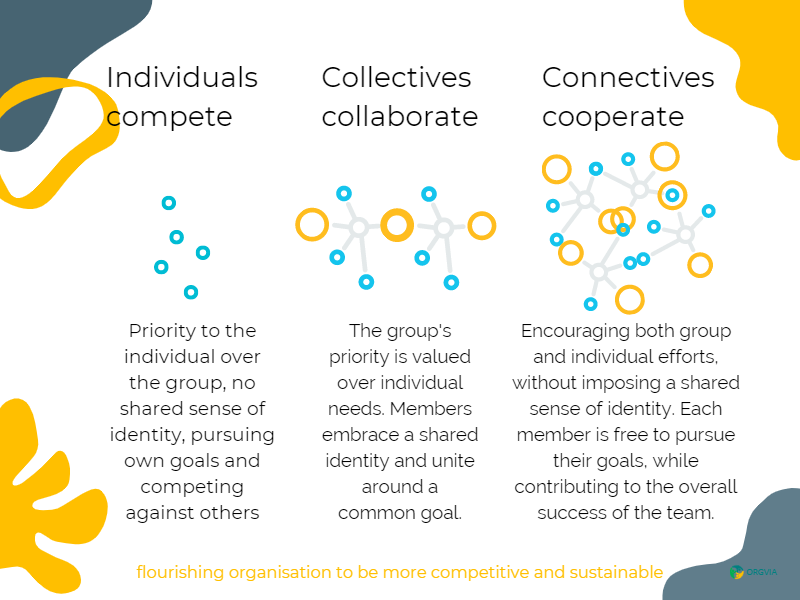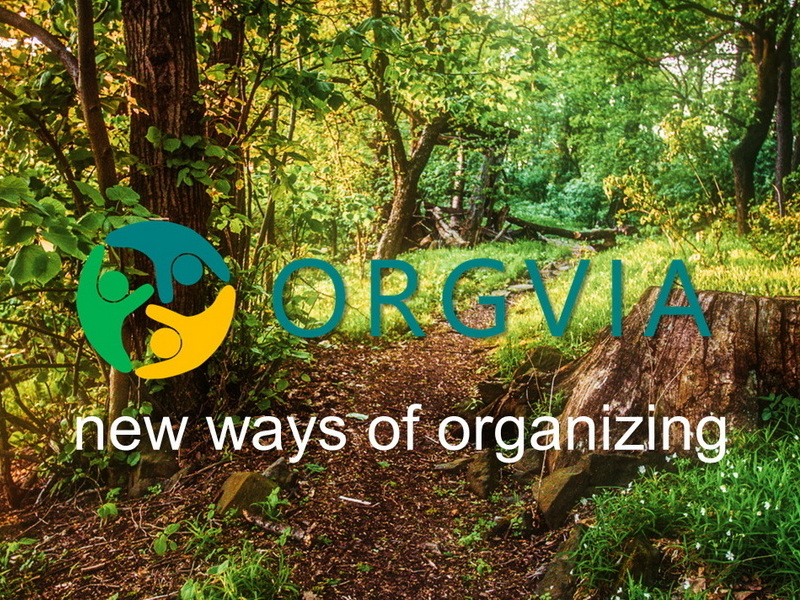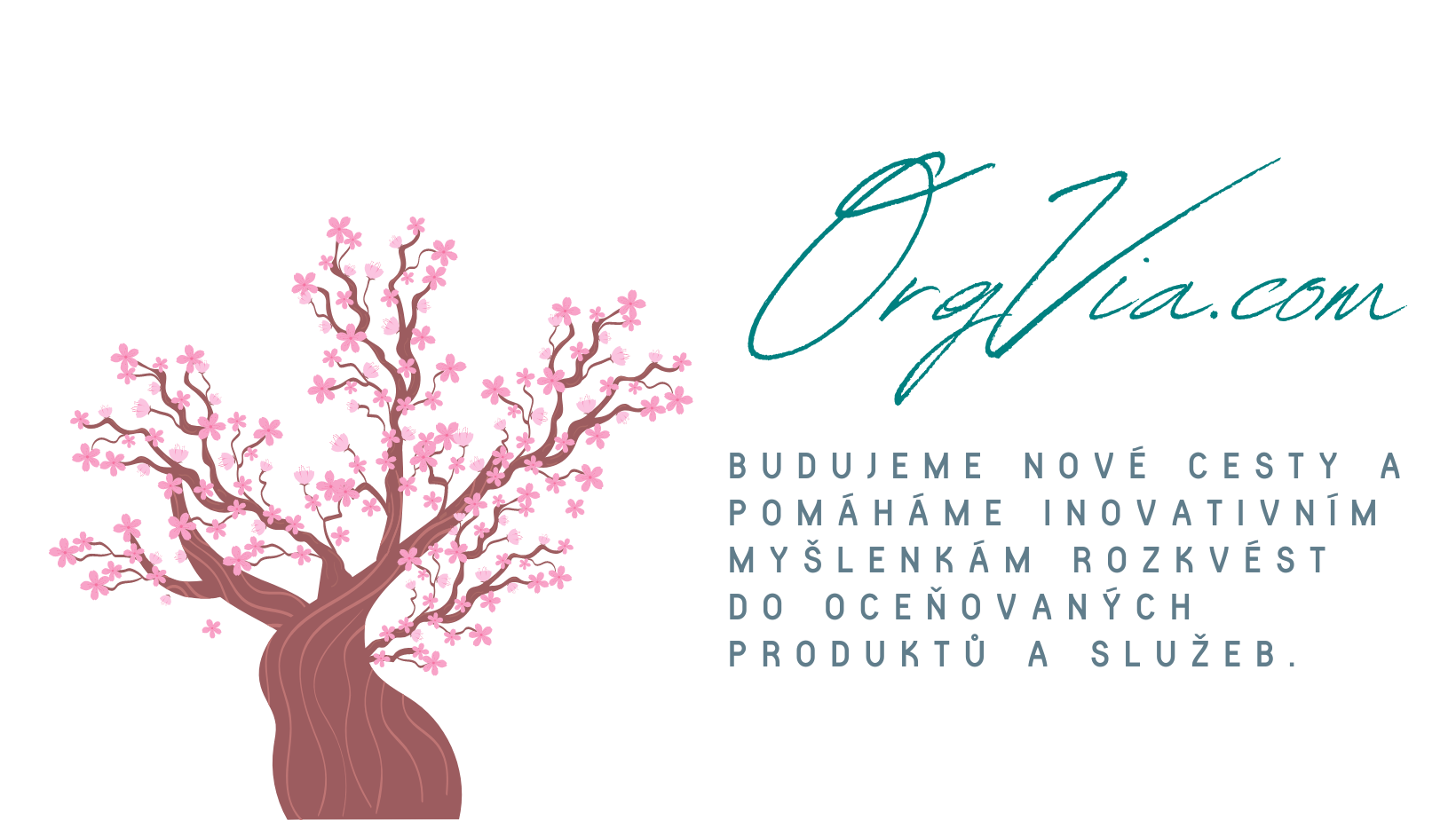Power of Cooperation instead of Collaboration
This article focuses on the benefits of cooperation instead of nowadays widely adopted collaboration in the workplace and provides tips for fostering a cooperative team culture.
INTRO: Colab vs. Coop?
Collaboration is a vital component of a successful and productive workplace. Teams that work together effectively are better able to achieve their goals, overcome challenges, and ultimately drive success for their organisation. However, building a strong and cooperative team culture requires deliberate effort and a focus on developing key skills and strategies. At the same time as the rhythm of innovations is accelerating, and AI platforms are approaching mainstream, many orgs are rethinking how they act across many teams in parallel and reinventing the management without managers ;-) and adopt the concept of teams of teams.
Collaboration and cooperation are two related but distinct concepts that refer to working together towards a common goal. While they are often used interchangeably, the two have some differences:
- Cooperation typically refers to individuals or groups working together towards a shared objective while retaining their independence and autonomy. In other words, each party is responsible for their own part of the task and coordinates their efforts with others to achieve the desired outcome. Cooperation is usually based on mutual respect, trust, and understanding of each other’s strengths and weaknesses.
- On the other hand, Collaboration refers to a more integrated approach to working together. In collaborative efforts, individuals or groups jointly design, plan, and execute a project or task. Collaboration involves higher interdependence, with each party contributing to the collective effort by sharing resources, expertise, and ideas. Collaboration often requires more communication, compromise, and coordination than cooperation.

In cooperative environments, the acting teammates and teams are more independent on each other and take deeper responsibility for their actions. In cooperative teams, the role of managers and Mr. Forwards is dissolved and sometimes not needed anymore as a specialised role. Cooperation is based on the network of competence clusters and is more resilient against human risks and failure of critical points. At the same time cooperative teams are more self-healing, agile and productive. Both collaboration and cooperation have their strengths and weaknesses. Here are some of the key points to consider:
Strengths of collaboration:
- Greater pooling of resources and expertise, leading to better problem-solving and decision-making.
- Increased creativity and innovation through the exchange of ideas and perspectives and shared collective intelligence.
- Enhanced commitment and motivation, as everyone has a stake in the outcome and feels valued for their partial contributions.
- Improved communication, as collaboration requires more frequent and open dialogue among team members.
- Better risk management, as a collaborative approach, allows for early identification and mitigation of potential issues.
Weaknesses of collaboration:
- Collaboration can be time-consuming, as it requires more planning & replanning, coordination, and communication than cooperation.
- Collaborative efforts can sometimes result in disagreements or conflicts over roles, responsibilities, and decision-making authority without clear responsibility for failures and HQ outcomes.
- The quality of collaboration depends heavily on the skills and personalities of all the team members involved. If individuals are not able to work effectively together, collaboration may not be successful.
- Collaborative efforts can sometimes result in groupthink, where individuals may be hesitant to express dissenting opinions or ideas for fear of disrupting the group dynamic.
- Teammates are not often behaving too responsibly and are sometimes hiding after others.
One of the key benefits of collaboration is the ability to bring together diverse perspectives and skills – but it can be done in cooperating teams too ;-). When team members with different backgrounds and expertise work together, they can create more innovative and effective solutions to problems. Collaboration also allows team members to share knowledge and learn from each other, which may lead to greater overall growth and development.
Strengths of cooperation:
- Cooperation can be more efficient than collaboration, as it allows individuals to work independently and in parallel on more tasks and better utilise their productive time while still contributing to the overall goal.
- More teams can fully cooperate in parallel
- Cooperation can be easier to manage, as it does not require as much coordination and communication internally as collaboration.
- Cooperation allows individuals to leverage their strengths and expertise, leading to greater autonomy, satisfaction, and meaning at work.
- Cooperation can promote greater trust and goodwill among team members, as it requires high respect, trust and honest communication.
- Teammates are more involved in shared purpose + objectives.
- It is more empowering every individual team member to evolve.
- Due to more independence of teams, this concept helps everybody to evolve their strengths and talents and be more utilised
- Cooperation is more resilient thx to role sharing and substitutability.
Weaknesses of cooperation:
- Cooperation can sometimes result in duplication of effort, as individuals may not be fully aware of what others are working on.
- Cooperation can sometimes lead to silos, where individuals become overly focused on their own tasks and lose sight of the bigger picture.
- Cooperation may not result in the same level of creativity and innovation as collaboration, as individuals may be less likely to share ideas and perspectives to others (other teams). But it can be mitigated by honest org culture, sharing knowledge + goals plus profit transparency.
- Cooperation may not be as effective in situations that require a high degree of interdependence and coordination among team members.
- Big risk of cooperation is overcommunication among all involved.
In summary, while cooperation involves working together while retaining independence, collaboration involves a more integrated approach where parties work together closely to achieve a shared goal. Thx to modern knowledge management ICT ecosystems, many of the weaknesses of cooperation can be solved by good organic knowledge sharing and status updates to know on every point what is valid and who is responsible in a form accessible to everyone. The coop approach can also mitigate the risk of “exploiting human knowledge personal lakes” because it is based on the principle of sharing digitally, everything and in every phase. In the uprising of AI era this will be a more and more popular concept, how to organise teamwork in competence clusters with AI power as co-pilot cross-over humans and technology (IoT) overall teams.
I believe that in future, there will be dynamical alignment of competence cluster nodes closely joining humans and AI to effectively solve problems, but the pyramidical structure of many organisations as we know it today, will be replaced by complex cooperating competence networks including humans supervising the work of nodes. It will foster more and more flexibility in teamwork in context of ever-changing dynamic real world.
To build a strong and cooperative team culture, it is important to establish clear goals and expectations for all teams and their appropriate team members. Teams that are aligned around a common purpose are better able to work together effectively and achieve their goals. Creating a culture of trust and psychological safety can encourage team members to share their ideas and perspectives openly, leading to greater collaboration and teamwork. Cooperative teams can be helpful a lot to all to be more effective by focusing more on what matters now in the real-time context of your personal, team and company goals and prioritise more flexibly. Due to smaller but aligned and targeted teams and lower disturbance resilience from other cooperative network parts, cooperating Teams will achieve more, are more resilient to individual failures, and are better scalable.
Case studies of teams that have achieved success through cooperation and teamwork can provide valuable insights and inspiration for other teams looking to build a strong and cooperative culture. These stories highlight the benefits of cooperation and teamwork and provide examples of successful strategies and approaches.
Finally, fostering a culture of continuous improvement and flourishing within the teams is important. By regularly seeking feedback and reflecting on their performance, teams can continuously identify areas for improvement and work to develop their collaboration and teamwork skills over time.
In summary, cooperation is a powerful approach to building a strong, flexible, productive, and resilient team culture. By fostering a sense of shared purpose, creating a culture of trust and psychological safety with holistic approach and seeking opportunities for growth and development, teams can work together effectively and achieve success in their goals faster with higher quality.
So are you prepared for the transition from the collaboration sugar&whip model toward cooperation based on shared objectives (purpose/goals)?

IMPROVING LIFE THROUGH BUSINESS IN CZECHIA TODAY
As long as disrespect & misunderstanding & injustice persist, none of us can truly breathe a sigh of relief. It doesn’t take much to change a life – start with yourself, speak up today and let’s make positive change happen. Understand, create, relate, respect, influence and be great.


